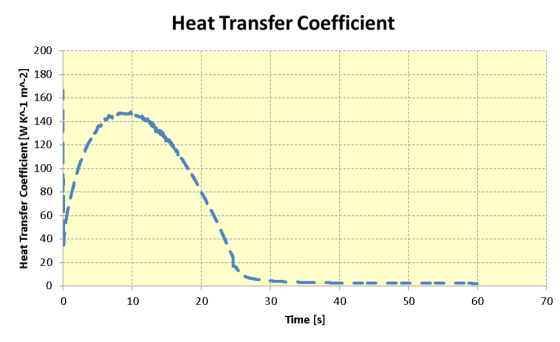Joint European Torus (JET) has been planning a tritium operation sequence for which
some of the safety analyses need to be repeated. In this framework, three different
scenarios of Loss of Vacuum Accident (LoVA) require inventory release assessment. The
starting event for all investigated scenarios is a local failure of the vacuum system
integrity that results in an initial ingress of the surrounding air and a later release
of the system inventory.
The heat transfer between the hot torus walls and the inflowing air determines the extent
of the later release when the air heats up and the pressure in the torus increases above
the ambient pressure. This thermal effect was significantly underestimated in the initial
safety study.
A transient CFD analysis was conducted for one of the cases with a nominal failure size of
50 mm in diameter. The torus is initially under ultra-high vacuum (below 1.0e-8 mbar) with
a uniform temperature of the inventory and the walls of 320°C. The numerical simulation was
conducted for a time interval of 60 s. From the start, the simulation timestep has to be
kept very small due to a large pressure difference between the ambient and the torus interior
that initiates a hypersonic jet.
CFD modelling of Loss of Vacuum Accident (LoVA) in JET
During the simulation, the heat transfer from the wall to the air flow was monitored. The obtained
heat transfer coefficient was later used in a MELCOR model of the JET torus to calculate the extent
and behaviour of the released inventory.

Heat transfer coefficient during the LoVA transient
Dr Andrei Horvat
M.Sc. Mechanical Eng.
Ph.D. Nuclear Eng.
phone
+44 79 72 17 27 00
skype
a.horvat
e-mail
mail@caspus.co.uk
M.Sc. Mechanical Eng.
Ph.D. Nuclear Eng.
phone
+44 79 72 17 27 00
skype
a.horvat
mail@caspus.co.uk

